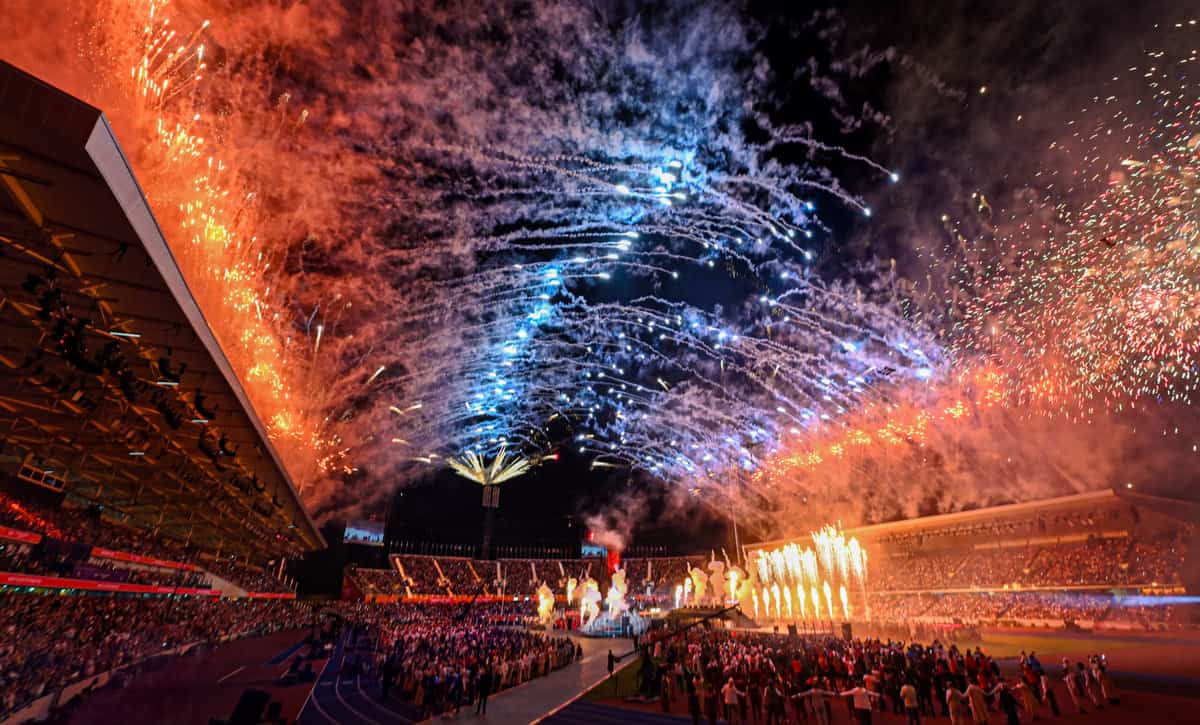
The 2022 edition of the Commonwealth Games has just concluded. For India it was a satisfactory exercise as our country finished fourth on the medal table. There were excellent performances from Indian newcomers and India can henceforth look forward to brighter performances from these athletes in the future. But in all the euphoria that has been generated, let us take a look at the political and economic aspects of multi-discipline events.
The initial objective of holding the Commonwealth Games every four years was to continue to extend Britain’s soft power over its empire through the medium of sports.
The idea of conducting a worldwide sports event especially for countries ruled by the British Empire was first proposed as long back as 1891 by a person named John Astley Cooper who wrote several letters and articles in leading dailies espousing the cause of such an exercise. The idea received lukewarm response but gradually gained strength and the first games known as the British Empire Games was held in 1930 in Hamilton in Canada. It was during the second British Empire Games, held in London in 1934, that Indian sportspersons first took part.
Over the years the British Empire Games (now known as the Commonwealth Games) has been hit by political controversy and even boycotts. But the original objective of Britain was to keep all the countries under a common fold and exert its influence. Various policy makers in Britain felt that along with the use of military power, the use of influence through promotion of cultural activities and sport (what we now term soft power) could be of great help to the image and clout of Great Britain.
By influencing culture, the imperial administrators disseminated a set of values and ideas which enabled them to create favourable opinions across the world. One of the most identifiable aspects of this can be seen in the widespread use of the English language in every walk of life. If we read any international news, it is mostly in English. So the ideas that are pushed into our minds are those of the English speaking world. Using influence through culture and sports is another way of creating a sphere of control.
Two years after India became independent it proclaimed itself a republic. Under the leadership of Prime Minister Jawaharlal Nehru, India decided to remain within the British Commonwealth. “We join the Commonwealth because we think it is beneficial to us and to certain causes in the world that we wish to advance,” explained Nehru in the Constituent Assembly on 16th May, 1949.
In 2010 when New Delhi hosted the Commonwealth Games, it was India’s turn to exert influence. The Delhi Games was one of the grandest sports shows ever held in this country. Delegates, participants and media from across the world came to India and saw the huge stadiums and the excellently organised events. One boxer from Jamaica told this correspondent (I had covered the Games) that he had never imagined India was like this. “So many cars, such wide roads, these tall buildings. We were under the impression that India is a third world country. After coming here I know what India is really like,” he said.
So the objective of image building, creating influence and showcasing organisational ability was done effectively by India on that occasion. But another aspect that is often overlooked by analysts is the fact that with each passing edition, the Games are becoming bigger, more complex and therefore also more expensive. It is high time for countries to take a very close look at the soaring cost factor.
The most expensive edition of the Games was the one held in New Delhi in 2010. The estimated cost of the Delhi games was 11 billion US dollars according to Business Today magazine. The initial budget estimate of the Indian Olympic Association overshot the mark by a huge amount.
So is all this expense worth it? Several years ago an analysis conducted by PricewaterhouseCoopers on four editions of the Games found that each dollar spent by governments on operating costs and creating infrastructure, generated 2 dollars for the host city with an average of more than 18,000 jobs generated by each of the events. But the report is silent about what happens after the Games are over. What happens to these jobs later? It seems unlikely that the jobs remain permanent.
In these days of rising inflation and soaring prices, is it wise for governments to spend so much money on sports extravaganzas? The events such as the Olympics, Commonwealth Games and Asian Games are becoming highly unwieldy and expensive. This is the right time to restructure these events to cut costs. One way would be to hold the games in parts, clubbing two or three sports in each part and allocating different parts to different countries.
The debate of whether the whole show is worth conducting or not will definitely continue. But there is no doubt that soft power can be exercised and maintained through the medium of sports and culture. That is why governments will be tempted to continue spending huge amounts for these lavishly organised events. Already plans have been drawn up to conduct the next Commonwealth Games (which have been allotted to Victoria in Australia) in a grand manner. We may see new records in terms of expenses when the next edition is held in 2026. So wisdom may not dawn in the near future but we hope that it will blossom later.



